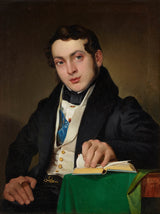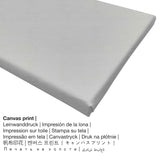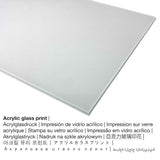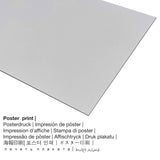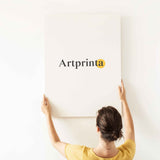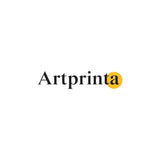Eduard Ritter, 1835 - Nwa okorobịa nọ ọdụ na uwe ojii - ọmarịcha nka
Ụtụ gụnyere. Mbupu gbakọrọ na ndenye ọpụpụ.
Supplemental information from Belvedere (© - by Belvedere - Belvedere)
Ritter had been taught at the Vienna Academy of Fine Arts in the years 1829-1834 in the history painting. The first painting, with whom he participated in an academy exhibition (1830, no. 235), was, however, no historical or mythological scene as it could be provided for a student of this subject, but a self-portrait. The stay of this painting is unknown today, but the portrait shown here can a young man, which was created five years later, to give an impression of high artistic level that the young painter had already reached in the 1830s. What is unusual about this depiction is the perspective, because in the foreground the small tables can be seen, only behind the portrayed sitting. Through this game with the optical illusion and the hand shown in excellent shortening that moreover leafing through natural movement in a book, Ritter documented an artistic level, could make the few artists of his time claimed for itself. A suggestion for the space-creating "set piece" in the foreground may be found in the paintings of Gerard Dou (1613-1675), who could know our painters from the Imperial Collection in the Upper Belvedere (today Kunsthistorisches Museum Vienna). Perhaps the "referee" (1529, Kunsthistorisches Museum, Vienna, Inv 783) inspired him by Barthel Beham (1502 to 1540) d or portraits of Hans Holbein. J. (1497-1543), which were available as reproductions. These possible models, however, were very independently implemented in this image and timely adapted. The figure in its overall appearance conveys a unique proximity to life, for instance through the open features, the intelligent-questioning look, the soft molded lips and the relaxed-looking posture. This impression is reinforced by the clear, fresh colors and a painting technique that using fine but easily applied shades modeled the body gently. Unusual is also the folded-back tablecloth by which the attached to the quill of the painter signature becomes visible. [Sabine Grabner, in: Grabner, Sabine: More than Biedermeier. Classicism, Romanticism and Realism in the Austrian Gallery Belvedere, Munich 2006, p 82f]
Ozi nka ahaziri
| Aha eserese: | "Sitting young man in a black skirt" |
| Nhazi: | sere |
| Okwu mkpokọta: | nkà nke oge a |
| Narị afọ nka: | 19th narị afọ |
| Emepụtara na: | 1835 |
| Afọ nka: | ihe karịrị 180 afọ |
| Ihe osise izizi: | mmanụ na kwaaji |
| Nha nke ihe nka izizi: | 38,5 x 30 cm - akụkụ etiti: 47 x 38 x 6 cm |
| mbinye aka izizi nka: | signed and dated lower right: p knight. / 1835th |
| Ụlọ ihe ngosi nka / mkpokọta: | Belvedere |
| Ebe ngosi nka: | Vienna, Austria |
| URL webụ: | www.belvedere.at |
| Ụdị nka nka: | ngalaba ọha |
| Site n'aka: | © Belvedere, Vienna, nọmba ngwa ahịa: 5028 |
| Ebe E Si Nweta: | zụta site na Dorotheum, Vienna na 1955 |
Ozi nka ahaziri
| Aha onye nka: | Eduard Ritter |
| Aha ndị ọzọ: | Eduard Ritter, Ritter Eduard |
| Obodo onye nka: | German |
| Ọrụ nke onye na-ese ihe: | etcher, drawer, artist, lithographer, painter |
| Country: | Germany |
| Nhazi nke onye nka: | omenkà nke oge a |
| Ụdị nka: | Ihe ngosi |
| Akwụsị: | 72 afọ |
| A mụrụ: | 1820 |
| Obodo amụrụ: | Hamburg, Hamburg State, Germany |
| Afọ ọnwụ: | 1892 |
| Nwụrụ na (ebe): | Vienna |
Nkọwa ngwaahịa
| Nkewa edemede: | mmepụta nka |
| Usoro mmeputakwa: | dijitalụ mmeputakwa |
| Production usoro: | mbipụta dijitalụ (Mbipụta UV ozugbo) |
| Production: | emere na Germany |
| Ụdị ngwaahịa: | mmepụta ihe na-achọ |
| Eji ngwaahịa a chọrọ: | Ụlọ ihe osise nka, foto mgbidi |
| Nhazi: | usoro eserese |
| Ụdị anya: | 3: 4 |
| Nkọwa nke oke onyonyo a: | ogologo bụ 25% mkpụmkpụ karịa obosara |
| Ngwa ngwaahịa dị: | mbipụta ọla (aluminium dibond), mbipụta akwụkwọ mmado (akwụkwọ kwaaji), mbipụta kanvas, mbipụta iko acrylic (nwere ezigbo mkpuchi iko) |
| Nhọrọ nke akwa akwa n'elu etiti ihe ndọtị (mbipụta akwa akwa): | 30x40cm - 12x16", 60x80cm - 24x31", 90x120cm - 35x47", 120x160cm - 47x63" |
| Mpempe iko acrylic (nwere ezigbo mkpuchi iko) nha: | 30x40cm - 12x16", 60x80cm - 24x31", 90x120cm - 35x47" |
| Mbipụta akwụkwọ mmado (akwụkwọ kwaaji): | 30x40cm - 12x16", 60x80cm - 24x31", 90x120cm - 35x47" |
| Aluminium dibond ebipụta (ihe aluminium) nha dị iche iche: | 30x40cm - 12x16", 60x80cm - 24x31", 90x120cm - 35x47" |
| Nhazi nke nnomi nka: | agunyeghi |
Họrọ nhọrọ ihe onwunwe gị
Maka ngwaahịa ọ bụla anyị na-enye nha na ihe dị iche iche. Nhọrọ ndị a dị maka n'otu n'otu:
- Mbipụta ọla (aluminium dibbond): Aluminium Dibond prints are metal prints with a true effect of depth. A direct Aluminium Dibond Print is the ideal start to art reproductions with aluminum. The colors of the print are bright and luminous in the highest definition, the details of the print appear crisp and clear. The UV print on aluminium is the most popular entry-level product and is a stylish way to showcase fine art reproductions, because it draws attention on the replica of the artwork.
- Mbipụta kwaaji: A canvas print, not to be mistaken with an artwork painted on a canvas, is an image printed onto cotton canvas. The canvas produces a soft and comfortable look. The great advantage of canvas prints is that they are relatively low in weight. This means, it is easy and straightforward to hang up the Canvas print without any wall-mounts. Because of thata canvas print is suited for all kinds of walls.
- Mbipụta akwụkwọ mmado (akwa akwa akwa): The Artprinta poster is a printed cotton canvas with a granular surface finish, that reminds the actual version of the artwork. Please note, that depending on the size of the poster we add a white margin between 2-6cm around the print motif, which facilitates the framing with a custom frame.
- Bipụta na iko acrylic na-egbuke egbuke (nke nwere ezigbo mkpuchi iko): An print on acrylic glass, often named a UV print on plexiglass, will turn your favorite original into beautiful décor. The artwork will be made thanks to the help of state-of-the-art UV print technology. The major upside of an acrylic glass print is that contrasts and also granular image details become visible due to the very fine tonal gradation of the picture.
Nkọwa ngwaahịa nka
Sitting young man in a black skirt is an artwork made by the German painter Eduard Ritter n’afọ 1835. The 180 year old version of the work of art was painted with the size: 38,5 x 30 cm - frame dimensions: 47 x 38 x 6 cm. Mmanụ na kwaaji etinyere onye na-ese ihe dị ka usoro maka ihe osise. Ihe osise izizi nwere ihe odide a: signed and dated lower right: p knight. / 1835th. This piece of art belongs to the Belvedere's art collection in Vienna, Austria. a ngalaba ọha artwork is being included with courtesy of © Belvedere, Vienna, inventory number: 5028. : purchase from the Dorotheum, Vienna in 1955. What is more, the alignment of the digital reproduction is Eserese na nwere akụkụ ruru nke 3: 4, meaning that the length is 25% shorter than the width. Eduard Ritter was a artist, painter, etcher, drawer, lithographer of German nationality, whose artistic style can be classified as Realism. The artist was born in 1820 in Hamburg, Hamburg state, Germany and passed away at the age of 72 n'afọ 1892.
Legal disclaimer: We try the best we can to depict the art products with as many details as possible and to illustrate them visually. Nonetheless, the colors of the print products, as well as the print result can vary somehwat from the presentation on your monitor. Depending on the settings of your screen and the condition of the surface, not all color pigments can be printed as exactly as the digital version depicted here. Bearing in mind that all the art reproductions are printed and processed by hand, there may also be minor variations in the motif's exact position and the size.
© Nwebiisinka nke - Artprinta.com (Artprinta)

